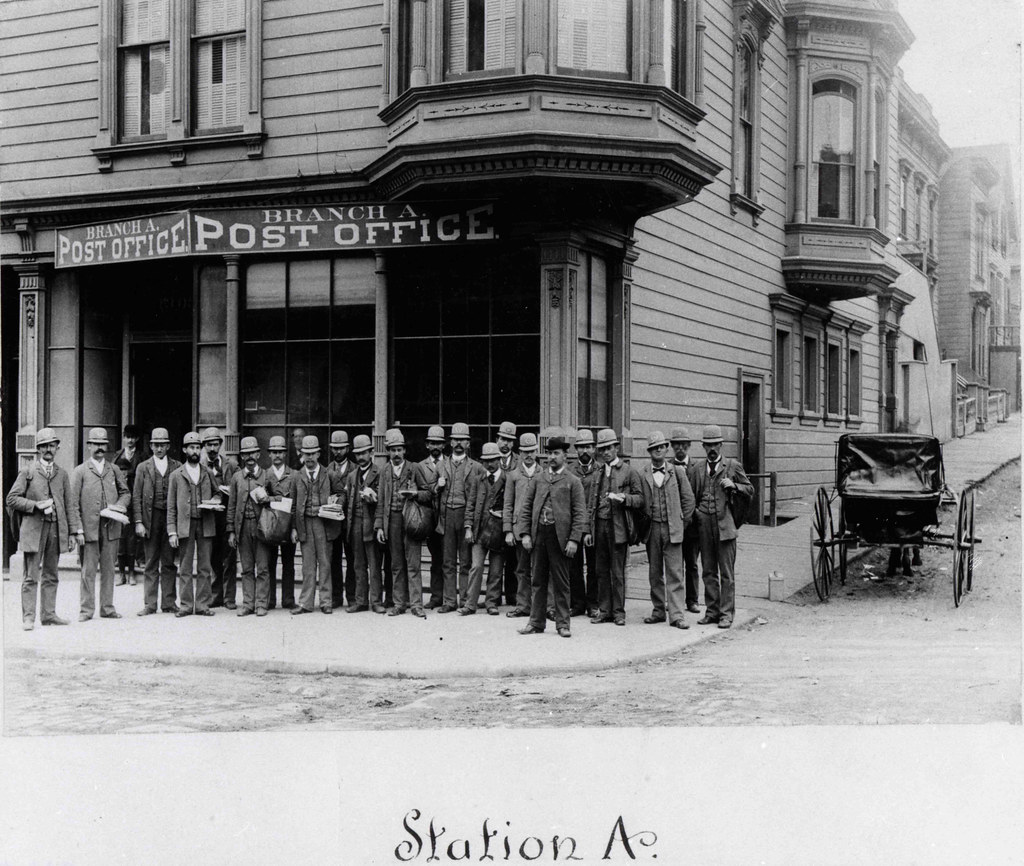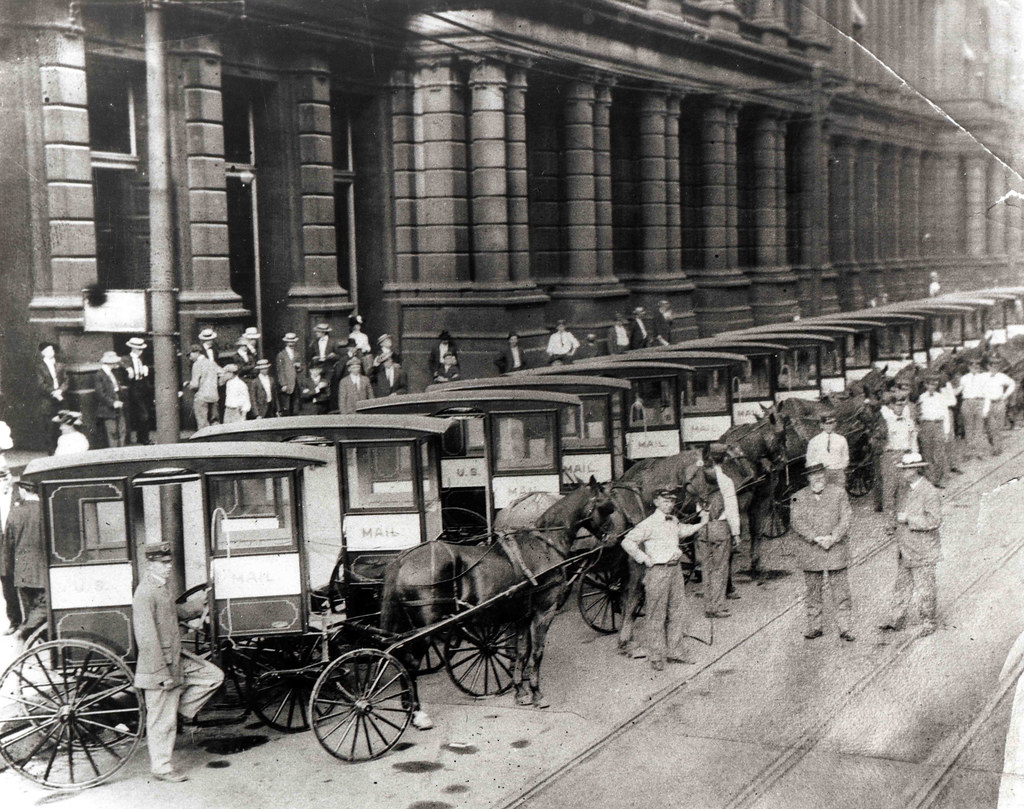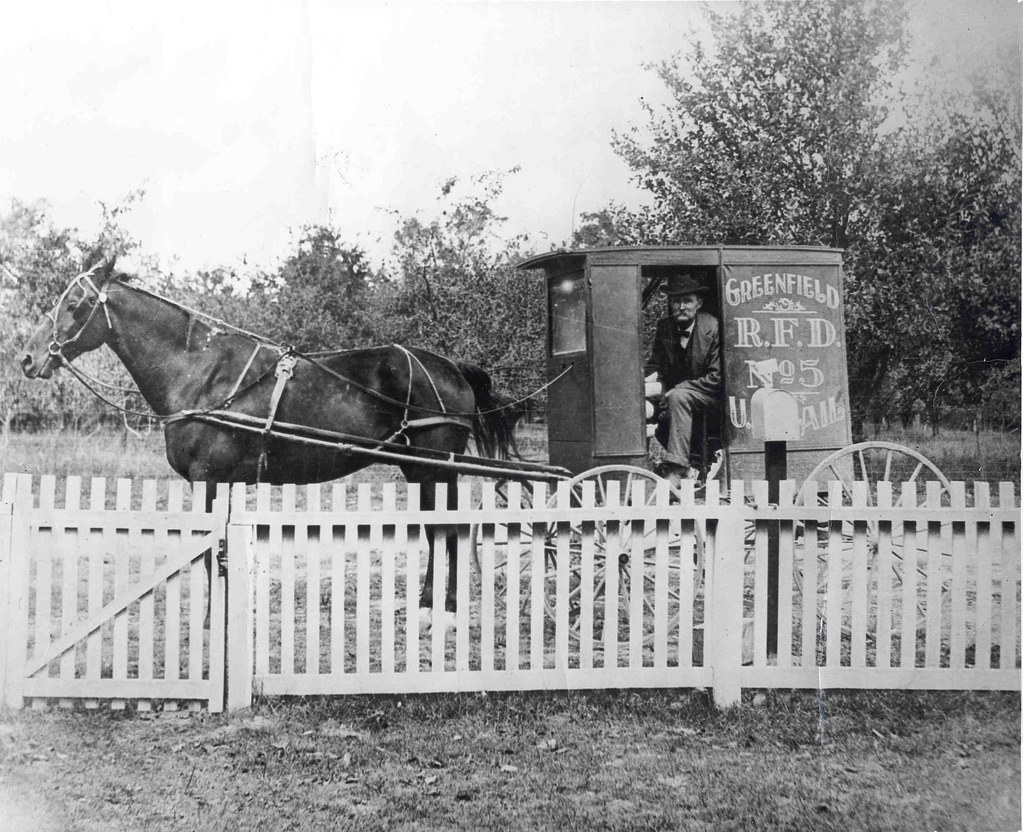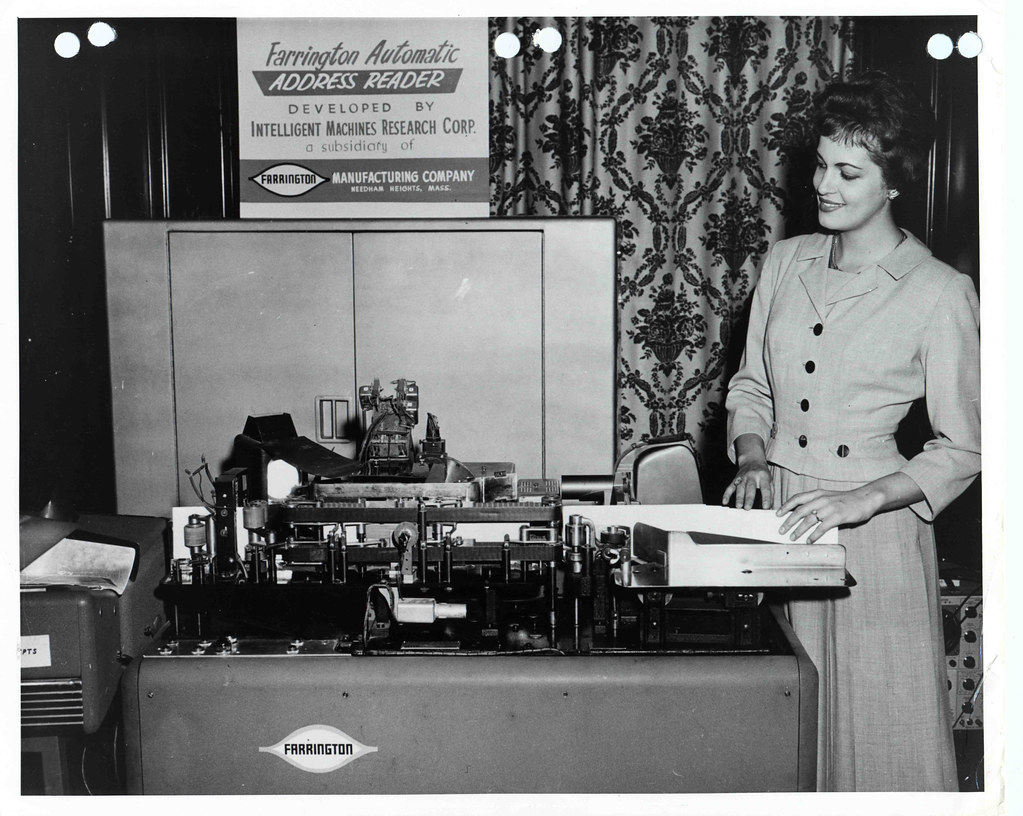USPS History and Images
United States Postal Service (USPS)
Have you ever wondered how exactly the United States Postal Service (USPS) came to be? Benjamin Franklin was appointed our first Postmaster General of Philadelphia, Pennsylvania in 1775; centuries later, we still use the system! With all our new technological advancements, what has changed? What more is there to know? No worries, all your questions will be answered! It’s time to explore the past, present, and future of the USPS!
The USPS Was Formed
In 1775, the USPS was established by the Second Continental Congress. With Benjamin Franklin as our postmaster general the foundations for many aspects of today’s system were put into place. Franklin was able to set up new and more efficient colonial routes that would cut the delivery time in half between Philadelphia and New York by having relay teams transport the weekly mail wagon both day and night which operated on a regular schedule. He also debuted the first rate chart which helped to standardize delivery costs based on distance and weight.
Unfortunately, in 1774, the British fired Franklin from his postmaster job, however, a year later, he earned a new job as postmaster general of the United Colonies and was appointed as such by the Continental Congress. Franklin’s son-in-law, Richard Bache, was declared comptroller and William Goddard was appointed surveyor. With Franklin in charge, along with his immediate successors, the postal system primarily had communication with Congress and the armies.
Franklin held the job up until late 1776 when he was sent to France as a diplomat for the United States. Franklin left the United States with a vastly improved mail system with routes all the way from Florida to Maine and regular service between the colonies and Britain.
There are times in history where the USPS was addressed very subtly, for instance in 1781, the Articles of Confederation were ratified and Article IX specifically addressed postal issues by saying, “The United States in Congress assembled shall also have the sole and exclusive right and power of … establishing or regulating post offices from one State to another, throughout all the United States, and exacting such postage on the papers passing through the same as may be requisite to defray the expenses of the said office …”
 The San Francisco, Ca Post Office 1895
The San Francisco, Ca Post Office 1895
The Post Office in Early U.S.
Postmaster General Ebenezer Hazard served from 1782 to 1789. The Ordinance of the 18th of October in 1782 was passed at Hazard’s request which revised and codified the then current postal laws and regulations. This formed a monopoly on mail between the USPS and the government along with inhibiting censorship to times of war and gave permission for post riders to hold and deliver newspapers at reasonable rates. After Congress authorized to contract with stagecoach companies to transport mail through routes that were profoundly traveled in 1785, Ebenezer Hazard a regular mail route by the new access of stagecoaches between Boston and Portsmouth, New Hampshire.
New Hampshire ratified the Constitution in June 1788 giving Congress the power to “establish Post Offices and post Roads.” A year later, the Act of September 22, 1789 persevered the Post Office, making the Postmaster General have to obey orders from the president. It was only four days after when President George Washington named Samuel Osgood, a former Massachusetts congressman, as the first postmaster general under the new United States Constitution. This title he held until 1791. Around that time, there were about 75 post offices in the country and about 2,400 miles of post roads.
In 1789, the Office of the Postmaster General was created. A few years later, in 1792, with the benefit of the new Post Office Act, the post office was continued for another two years, formally admitting newspapers to the mails, along with giving Congress the power to establish post routes, and keep postal officials from opening letters that did not belong to them. The Post Office Act ran on three fundamental principles: first, to rely on itself, rather than the government running it, while still generating sufficient income; second, if there was a surplus, it would invest it in improving its service; third, Congress rather than the postmaster general would make decisions on where to put post roads. The Act of May 8, 1794 indefinitely continued the post office.
 USPS Mail Collection Wagons 1905
USPS Mail Collection Wagons 1905
Significant Growth
The number of post offices grew from 75 to 28,498 by 1820 and post roads increased from 2,400 miles to 59,473 miles by 1819 and 84,860 miles by the end of 1823! The Post Office Department served people in twenty two states by the end of 1819. With the country of the United States developing new states and establishing more communities, the Post Office Department was pressured for there to be more mail routes and a faster delivery time. The Department met the expectations of the people and expanded its service while also creating more ways to move mail quicker.
The Post Office Department became the biggest department in the executive branch by 1828 with 7,530 Post Offices and 29,956 postal employees, mail contractors, and carriers. Since there were so many jobs and contracts available for people to work for the Department, the power of the Postmaster General increased.
Mail in Rural Areas
Since a large portion, about sixty five percent, of United States citizens lived in rural areas during 1890, people from rural areas began to question why people in the city get much better postal service. Postmaster General John Wanamaker decided it would be much more ideal for one person to go out and deliver mail rather than having hoards of people from the country coming into the city in order to collect mail.
Congressman James O’Donnell introduced a bill in 1882 to expand the system for free delivery to rural areas, but the House Committee on Post Office and Post Roads hesitated to approve the proposal and ended up turning it down. Just over a year later, in March of 1893, a similar bill introduced by Georgia Congressman Tom Watson was passed. Wilson S. Bissell was Postmaster General and did not follow through with the experiment. Instead he suggested adding more post offices where they were needed.
William L. Wilson of West Virginia succeeded Bissell in 1895 and came upon an agreement with his predecessor that the experiment would be worthwhile if Congress could provide funding. Congress got together $40,000 by 1896 which was enough money to start the delivery experiment and rural free delivery service began! It started in West Virginia and spread with 44 routes in 20 states.
Rural carriers could carry packages weighing up to four pounds, however, they could not carry heavier packages according to the law. Heavier packages had to be mailed through private express companies. In 1904, Congress was asked by the Department to allow experimentation with larger packages. It was 1911 when Postmaster General Frank H. Hitchcock suggested for Congress to allow this kind of service in both rural and urban areas.
Free delivery in rural areas became a thrill for rural Americans which made the demand for packages containing food, dry goods, drugs, and other merchandise that is harder for farmers to find increase. Congress considered passing a law that would allow Parcel Post service, however, express companies fought this idea even when rural residents really wanted it.
The Act of August 24, 1912, authorized Parcel Post. This service would, according to 37 Stat. 539, “embrace all other matter, including farm and factory products not now embraced by law in either the first, second or third class, not exceeding eleven pounds in weight, nor greater in size than seventy-two inches in length and girth combined …” The Parcel Post service began at the beginning of 1913 and became an instant success. Within the first six months in which the service was offered, three hundred million parcels were mailed. The Parcel Post had a major positive effect on the economy as well.
 Rural Free Delivery Greenfield Indiana 1905
Rural Free Delivery Greenfield Indiana 1905
USPS in the Mid 1900s
Thousands of postal employees left to serve the military during World War II, so in order to balance the loss, in 1943, the Post Office Department began a system in which they would zone addresses by one or two numbers between city and state so mail could be separated. This system worked for the most part, however, when old delivery zones did not match the new ones, new numbers were phased in.
During the 20th century, the Post Office had to rely on mail handling methods from the colonial times due to setbacks from the Great Depression and World War II until the 1950s.
In 1956, the Post Office Department began working on ways to develop a better coding system for the United States’ postal needs by using methods from other countries. The Department also worked on projects to develop more machines and technologies which led to the first semiautomatic sorting machine introduced in 1956. A year later, a foreign-built Multi-Position Letter Sorting Machine (MPLSM) was established.
In 1978, the Postal Service came up with and started developing an expanded ZIP Code in order to simplify the mail processing procedure. In 1982, the first optical character reader (OCR) was installed, requiring for a letter to be read only one time by an OCR which would then print a barcode on the envelope.
A ZIP code with four add-on digits was then created to help speed up processing. This is known as the ZIP+4 code which was introduced in 1983. After the ZIP+4 code was introduced, in mid-1984, the first line of OCE channel sorters were implemented. 252 OCRs were installed in 118 mail processing centers by the end of 1984. These would go on to processing an average of 6,200 prices of mail per work hour, as opposed to the 1,750 prices per work hour by the MPLSMs.
Unfortunately, during the 1960s, the Post Office Department ran into some problems. In 1966, the Chicago Post Office came to a virtual stop. It was a “race with catastrophe,” as described by Postmaster General Lawrence F. O’Brien.
The postal savings system in the United States was abolished in 1966. The year after, deposits were still being made and were transferred to the United States Treasury. The system ended officially in 1967.

Farrington Automatic Address Reading Machine 1953
Reorganization
In 1970, a work stoppage began involving 152,000 postal employees in 671 different locations. The Army was then ordered to deliver mail when Labor Secretary George Shultz was asked by the union to get involved. Postmaster General Winton M. Blount agreed to negotiate wages under the condition that the employees resumed work, then the negotiations began. The people negotiating requested a general increase of wages by six percent, which took effect the year prior to the work stoppage, for all federal employees, with a possibility of an eight percent increase if it was agreed upon.
After all the negotiating, a reorganization plan was signed in 1970 which would include four important things found necessary by Postmaster General Blount. These include: adequate financial resources, an apolitical system to avoid corruption, collective bargaining, and an impartial system for setting prices. The bill provided an eight percent pay increase along with another negotiation of a new and improved wage schedule where postal employees would have the opportunity to reach their position’s pay cap within eight years.
On August 3, 1970, the Senate would agree on the report, House Resolution 17070, a revamped version of the legislation. Originally proposed by President, it was approved three days later by the House of Representatives. Soon after, President Nixon approved and endorsed the uttermost thorough postal legislation since the founding of the, the Postal Reorganization Act.
The USPS officially began operations in 1971 once the Postmaster General was no longer a member of the President’s Cabinet. After the Postal Reorganization Act, the USPS changed its ways. By 1972, Post Offices began accepting passport applications and by 1974, Highway Post Offices were terminated.
E-COM
Electronic Computer Originated Mail (E-COM) began at the start of 1982. Its intention was to allow business mailers anywhere throughout the United States to make use of electronics and ensure hard-copy mail is delivered to anywhere in the mainland United States within two days. The E-COM service initially permitted mailers to send messages up to two pages in length from personal computers to the E-COM serving Post Offices in the country.
Within only the first year of this service, the USPS ended up losing money from the E-COM service. It had trouble making profits so the Postal Service tried to sell this service to a private firm, without receiving any decent offers. Eventually, in 1985, the E-COM service was shut down.
New Barcode Equipment
Since letters are the most common thing sent over the mail, the Postal Service initially focused on creating a system to have letters automatically processed. During the 1990s, new technology and equipment sped up letter processing. By 1989, single-line optical character readers had been replaced by multiline optical character readers which allowed for equipment to go off of a barcode rather than using a ZIP+4 code. This allowed mail to be sorted automatically, more efficiently getting the mail to the carriers who did the actual delivering.
In 1991, the barcode scanners became capable of scanning the entire envelope face. This made it easier for mailers to design their mail and place their barcodes, which also saved them time. Prior to the new system, barcodes were to be placed in the lower right hand corner of each piece of mail.
The nine-digit barcode was lengthened in 1990 by two digits in order to sort mail to the customer level. Those two extra digits are known as “delivery points” and help sort letters into trays in delivery order to make it quicker and easier to deliver. In 1991, the first delivery barcode sorters were rolled out and by 1998, the machines almost completely replaced the old machines. Today, almost all city and a majority of rural mail carriers receive trays of letter mail in order of delivery.
The remote barcoding system was introduced in 1992 providing the Postal Service with a way to provide barcodes when they are poorly written or bad quality and cannot be processed by multiline optical character readers (MLOCRs). MLOCRs included a feature in which it sends an image of an illegible address to a remote encoding center without getting rid of the mail. Since 1996, advanced versions of this technology has been able to capture and send images of handwritten addresses. If the address is illegible to the technology, an operator reads the address and puts in the information manually.
Adaptations for the Present
In the 1990s, the Post Office Department began to recognize its new competition with mail being sent electronically. This led to some change in the structure of the Postal Services. In 1994, the Postal Office launched its first public internet website.
In 1996, integrate robotics became a major role in mail processing. A year later, robotics were used to automatically sort and load trayed letter mail into the vessels in which they will be transported. In the early 2000s, over 100 robotic arms designed to distribute mail were put into service.
Further Changes
In 2001, United States Comptroller General David Walker requested for changes to be made on some important aspects of the Postal Service. The Postal service was asked to make a plan that addressed the concerns of the General Accounting Office, now the Government Accountability Office. A year later, the Postal Service’s Transformation plan implemented the plan’s suggestions for finances, service, work condition improvements, as well as customer services. before being submitted to Congress. The plan targeted to make the expenditures more efficient..
In 2005, the Strategic Transformation Plan was published by the Postal Service, which was set to be used between the years 2006 and 2010. It presented additional strategies for delivering mail with astonishing results such as setting new records for performance and customer satisfaction, as well as gaining 7 million new addresses to its network, $5 billion in savings since 2000, and a 7.5% reduction in the number of career employees without resorting to layoffs.
Modern USPS
The past history of the USPS has finally been covered, but what is making history in our modern world? Today, the delivery stats in the United States are better than they ever have been in history with over 40,000 post offices and the postal service delivering over 212 billion letters and packages each year to about 144 million homes in the United States and its various territories. USPS is the single largest civilian employer in the US, employing over 700,000 full time staff who handle around 44 percent of all of the packages in the world. While not for profit, the USPS manages to sustain itself and break even through postage fees. This is a feat in and of itself, as the expenses of an organization this size can be astronomical; fuel prices rising one penny can cost the USPS upwards of eight million dollars.
USPS Future
The USPS is destined to have a future. Through the use of scanning-and-imaging tunnels, USPS records each and every package’s journey and sends customers updates. This increases productivity so that each package can be delivered within three days of expected delivery.
Modern OCRs process million of labels an hour with precision of scanning addresses. This makes it so the USPS can meet the expectations of every customer out there!
Even when there are storms, weather data is used by multiple organizations in order to deliver mail before the deadline. Advanced algorithms control the delivery fleet to choose the most efficient routes and avoid delays.
Conclusion
The USPS was established in 1775 with many aspects of it formed early on by Benjamin Franklin. The Post Office Act then helped keep the original principles of the Post Office and USPS in place. After expanding the delivery system in rural areas, it became free to send mail at a certain size and weight. With a few setbacks, everything came together in the end with new technological advancements and changes to the process.
Posted on June 12, 2019





